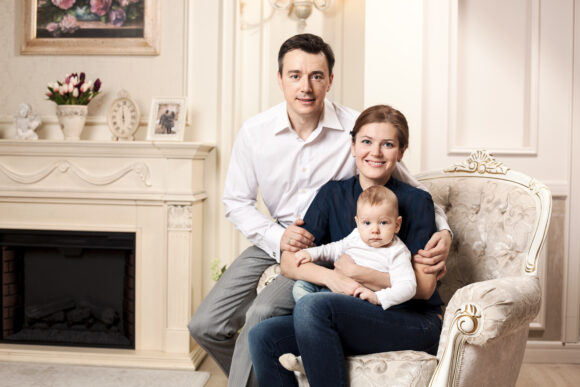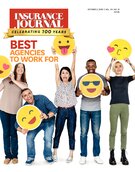Family enterprises that thrive play an outsized role in the economy, and, of course, in the lives of the family members, including the rising generation. In that vein, managing risk effectively on both a business and family level is imperative.
While the recent Family Enterprise Risk Index by Alliant Private Client found that many family enterprises — which are comprised of families, their businesses (such as single operating companies, holding companies/multiple family-controlled companies, and private trust companies), as well as their family offices — excel
at managing business risk, many face blind spots when it comes to family risk. In fact, the research found that 63% of respondents do not have a process in place to educate rising generations about the unique risks associated with being part of a prominent family.
Most (76%) of the enterprises on the 2023 Enst & Young and University of St. Gallen Family Business Index are more than five decades old. As family enterprises grow and evolve, so do the complexities of their risk, especially within the family. As rising generations of these successful families come of age, new risk exposures emerge. As such, so should practices to identify and mitigate risk.
The following are examples of common family member life milestones that may seem matter-of-course but could impact the enterprise and the family itself. They should be viewed with a risk management lens to better protect the family enterprise.
- Getting a first phone. While a pre-teen receiving their first phone may not seem significant, it’s something to be mindful of. A recent study by Pew Research Center indicates that the majority (95%) of teens report having access to smart- phones, and use of smartphones and social media naturally go hand-in-hand. Even if a 12-year-old is not part of the family business, young members of the family may have access to information that should not be shared beyond the household, such as private conversations or travel plans. Such information could naively or mistakenly be shared externally via social media. Actions as simple as a social media gaffe or unintentional cross-posting from a private TikTok or Instagram account to a public profile on another platform could have a ripple effect on the family’s safety or reputation.
- Obtaining a driver’s license. There is risk involved when any driver gets behind the wheel. But when that driver is inexperienced and part of a successful family, the potential for negative outcomes may be magnified. For example, when driving a family-owned vehicle, potential exposures likely have been planned for as part of the family’s insurance policy. But what if that new driver borrows a friend’s vehicle or rents a car while away at school and gets into an accident that unfortunately causes damage or even injury to others? An inadequately insured road trip or a simple spin around the block gone wrong could have an extreme effect beyond the individual or family — and to the business itself.
- Moving out of the family home. Like driving, having one’s own residence creates new possible liabilities. When a member of the family moves away to school or gets their own apartment or house, that newfound independence comes with additional responsibilities and risks, including additional liability. For instance, if the individual hosts a party where an injury occurs or alcohol is served to a guest who ends up driving under the influence and is involved in an accident, they can be held responsible — which again, can also impact the family enterprise.
Regardless of milestone, it’s important to keep in mind that anyone can be sued for alleged negligent actions, whether the claim is valid or not. Often when the person being sued is part of an ultra-high net worth or well-known family, the damages sought may be outsized, and any unexpected expenses — or reputational issues — could be troublesome.
Planning Ahead
To safeguard against these potential risks and more, effective communication and education at the family-level are vital. But, according to the Alliant Private Client Family Enterprise Risk Index, only 24% of multi-generational family enterprises undertake annual family risk reviews.
Ultra-high net worth families should conduct a family meeting to discuss risk and mitigation best practices at least once a year — as well as when new exposures arise, i.e., when the rising generation reach different life milestones.
All family members should receive risk education, in a manner appropriate for their age, that helps them understand how their actions may affect others and how being part of a wealthy family positions them for unique risks.
Also on the agenda for discussion should be the family’s code of conduct and how every member of the family has a role to play in adhering to it to better protect the family and its enterprise. The same study found that communicating a family code of conduct is often overlooked — only 35% said they take that action.
It’s best if communication around these issues is more dialogue than lecture so that members of the rising generation feel free to ask questions and share perspectives on the risks they face.
There is no silver bullet to managing risk for multigenerational family enterprises; the risks to consider and the priorities
of each are as unique as the family and business itself.
As family dynamics and risk evolve, working with a trusted insurance professional can help identify, plan for, and put in place risk mitigation measures to safeguard against exposures, including formalized codes of conduct and education for the next generation — all of which will help position both the family and business for long-term success.
Was this article valuable?
Here are more articles you may enjoy.



 Howden US Tells Judge Brown & Brown Employees Fled Due to ‘Mistreatment’
Howden US Tells Judge Brown & Brown Employees Fled Due to ‘Mistreatment’  Litigation Funding, Other New Laws in SE States Could Impact Liability Insurance
Litigation Funding, Other New Laws in SE States Could Impact Liability Insurance  Longtime Motel 6 Spokesman Tom Bodett Settles Lawsuit Against Chain
Longtime Motel 6 Spokesman Tom Bodett Settles Lawsuit Against Chain 


